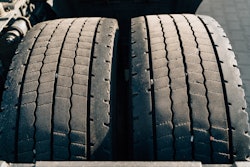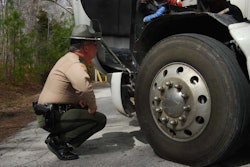Given proper attention, your fleet’s maintenance program can help you maximize asset life. However, before you even get to the maintenance stage you need to understand the equipment selection process. If you spec a vehicle that is not ideal for your needs, you might end up inadvertently hurting your capability to reach your cost per mile goals. No amount of maintenance is going to mitigate problem if, for example, your axle ratio is misaligned with your mpg requirement.
You should be reviewing vehicle specs each and every time you place an order for a new asset. Review specs with your dealer, the OEM and any manufacturers of add-on equipment. For example, if you are having a lift gate installed on a new trailer, see that it has the right capacity and the split is in the best place to accommodate your loading/delivery process.
The maintenance data you have collected on existing assets can help you when it comes to spec’ing a new asset. Comb maintenance data to see which types of vehicles, which models and which specs run best in your fleet. Look at the kind of maintenance you are doing as well as the warranty you are recouping to see which trucks give you the best return on investment.
Turning to maintenance itself, improving safety, maximizing uptime and reducing your overall life cycle costs should be your goals. Safety and efficiency must be at the forefront of all your maintenance and repair efforts.
Maintenance is a term that is used broadly, but actually is made up of several different elements. The first is preventive maintenance, which is your standard scheduled maintenance that takes place at predetermined intervals. It includes oil changes and both A and B services. Compliance with preventive maintenance schedules needs to be tracked. If you are not in near 100% compliance with scheduled maintenance, you don’t really have a maintenance program.
In order to have an effective preventive maintenance program, you need to understand when your assets are on the road, when they are being loaded and when they are available for maintenance, and make sure you have technicians available and bay space to accommodate the vehicles. If most of your vehicles are not in use on Wednesdays, you should have the bulk of your technicians available to work on Wednesdays.
Predictive maintenance, which basically is your condition-based repairs, is the next type of maintenance. Here is where the operational data you have been tracking comes in handy as you can spot wear trends and bring trucks in proactively before there is an on-road breakdown.
The third element is unscheduled maintenance, and that is basically repairs that are required between your scheduled preventive maintenance services.
In order to ensure that all types of maintenance are completed, you also need to track the time it takes to complete each type of service. If you are a 50/50 shop (50% of your work is preventive maintenance and 50% repair) and a preventive maintenance service takes six hours for the service and subsequent repairs, and there are five services due that week, you know you’ll need at least 30 hours dedicated to preventive maintenance for that week as well as 30 hours dedicated to unscheduled repairs.
One way to gauge the effectiveness of your preventive maintenance program is to look at the percent of maintenance that is unscheduled. A good rule of thumb is that 70% of your work should be scheduled maintenance and only 30% unscheduled. You pay a premium for breakdown service and may not be able to get the brands or exact parts you want if the vehicle is sitting on the side of the road.
We are lucky today to have so much maintenance data available to help make decisions on preventive and predictive maintenance. Fault code data tells us a lot about what is going on with an asset as does data from telematics devices. You can monitor things like drivers over-revving the engine, which can lead to premature valvetrain failure — a repair that cost upwards of $10,000. You can use this information to coach drivers on how to avoid over-speeding the engine.
It can be overwhelming to sift through all the available data. You may have 1,000 fault codes come up in a month, but remember that 55% to 60% are just informational codes that require no action. Focus on the most serious events; those that will result in an engine derate condition such as NOx, SCR, as well DEF fault codes. Once you have the codes you want to track it is imperative that you determine the frequency you want to review (daily, every three days, weekly, etc.). Keep in mind that your frequency will be based on how quickly the fault codes are detected versus when the failure takes place.
Properly managing all aspects of your maintenance operation can keep your fleet safe and lead to the best total cost of operation.
Matt Copot is vice president of maintenance at Transervice Logistics Inc., and is responsible for overseeing the company’s warranty, purchasing, quality assurance, fleet systems and training programs.













